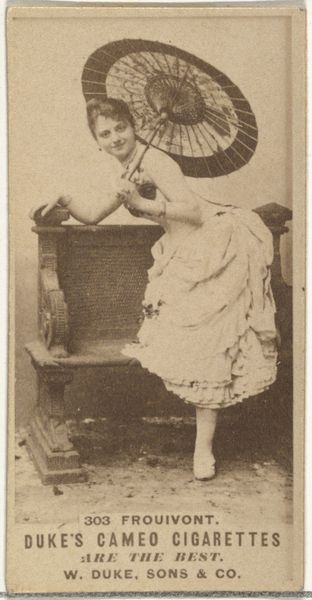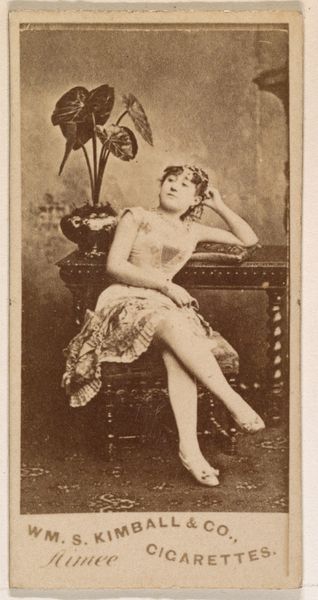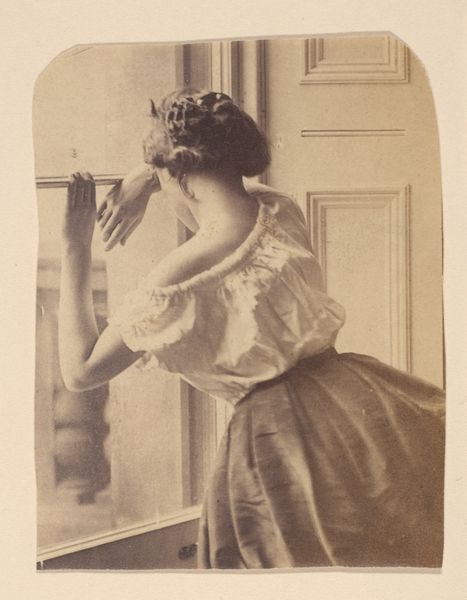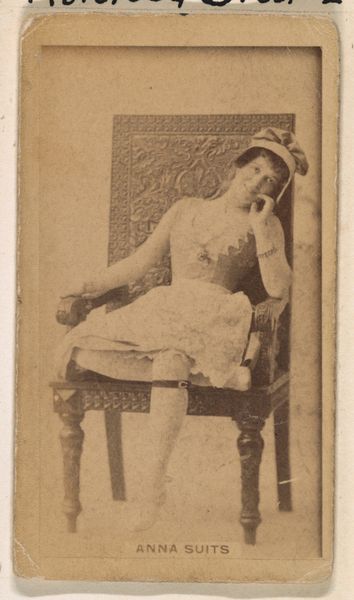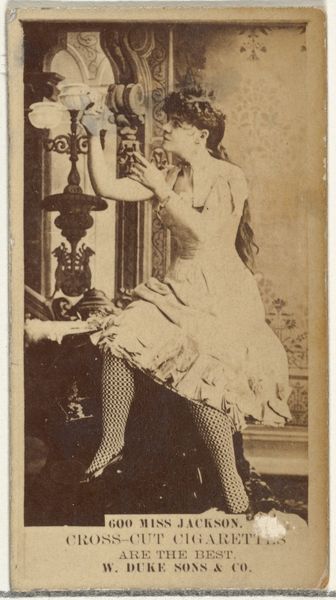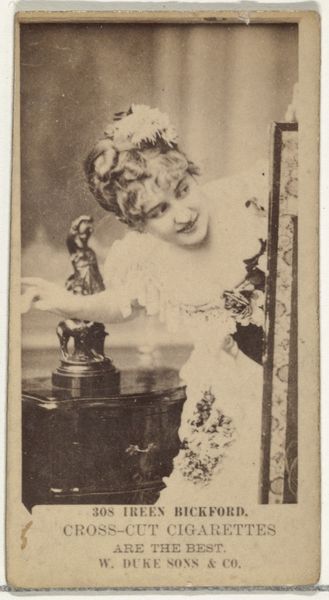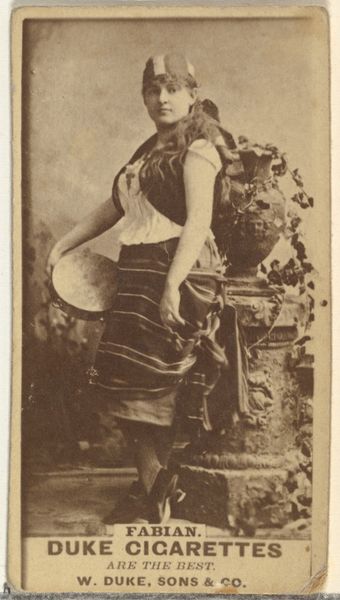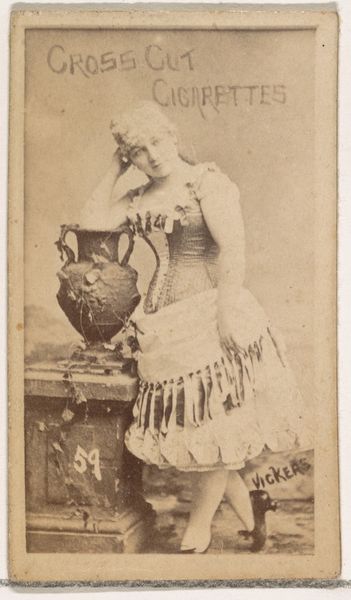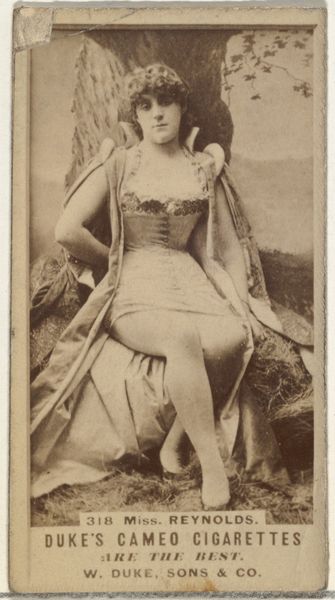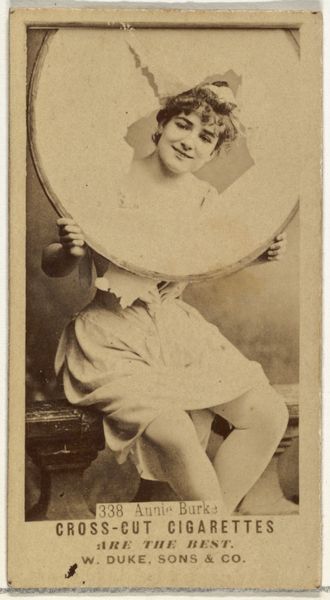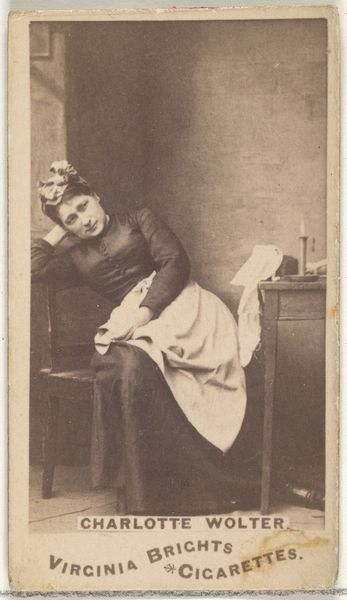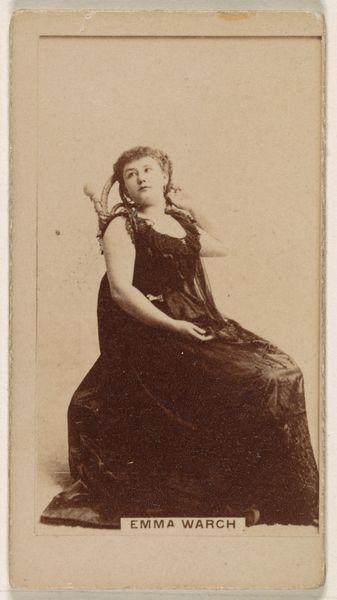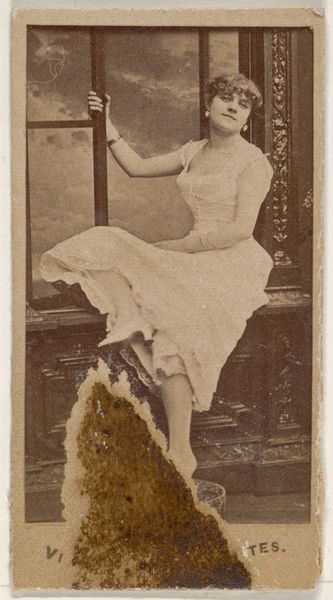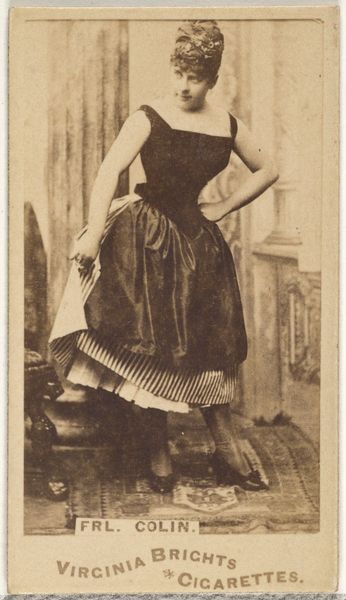
Dimensions: 25.2 x 20.3 cm (9 15/16 x 8 in.)
Copyright: Public Domain
Editor: This gelatin-silver print, "La Toilette," by Suzuki Shin'ichi, likely taken in the 1870s, has such a compelling intimacy. What's striking is how the seemingly candid moment feels carefully staged. What are your initial thoughts about this photograph? Curator: My eye is drawn to the performative aspect inherent in its production. Photography itself was a relatively new and laborious process at the time. Consider the sitter: her pose, the deliberate arrangement of objects around her, the manufactured “naturalness”. The creation of the photograph involves a conscious presentation of both labor and the artificiality of a constructed gaze for a largely Western audience. What is the material implication of the ukiyo-e style translated into photography here? Editor: That’s fascinating. The title itself, "La Toilette," is in French, which does further point to that Western audience. How might the choice of medium—photography instead of a painting or woodblock print—impact its reception and interpretation? Curator: Photography allowed for mass reproduction and dissemination. This specific gelatin-silver print could circulate, shaping and solidifying perceptions of Japanese customs and female beauty in a way unique from unique artworks. This accessibility alters its significance entirely. Do you see how it impacts the artist's role in shaping global views on labor, value, and production? Editor: I do. The photograph then becomes not just an artwork but a commodity, a piece of visual information consumed within a larger network of cultural exchange. Curator: Precisely. It challenges the notion of singular authorship and forces us to consider the economic and social structures at play in its creation and circulation. Editor: It's interesting how analyzing the material conditions opens up entirely new perspectives on the artwork's meaning and cultural impact. Curator: Exactly, we reveal much more than an artistic interpretation by grounding our perspective in materials and creation.
Comments
No comments
Be the first to comment and join the conversation on the ultimate creative platform.
